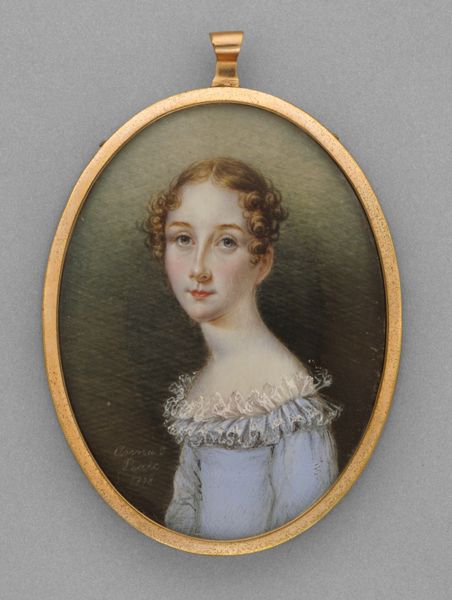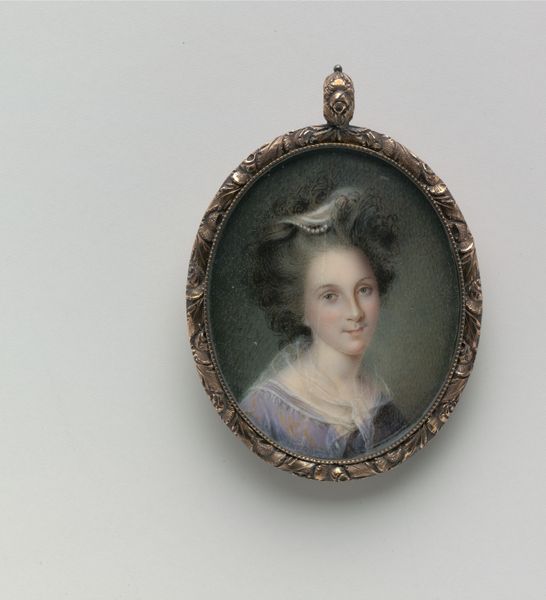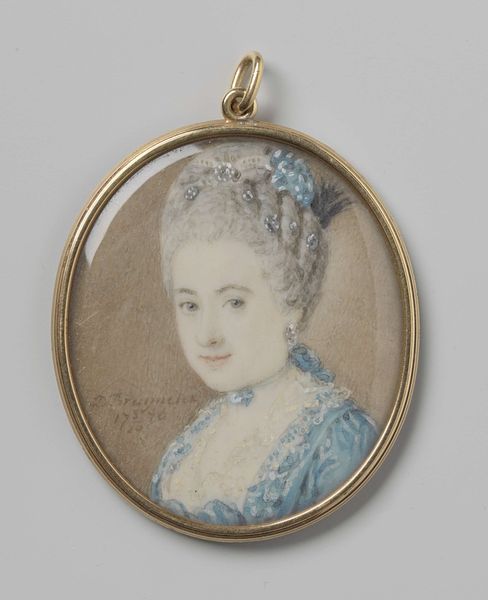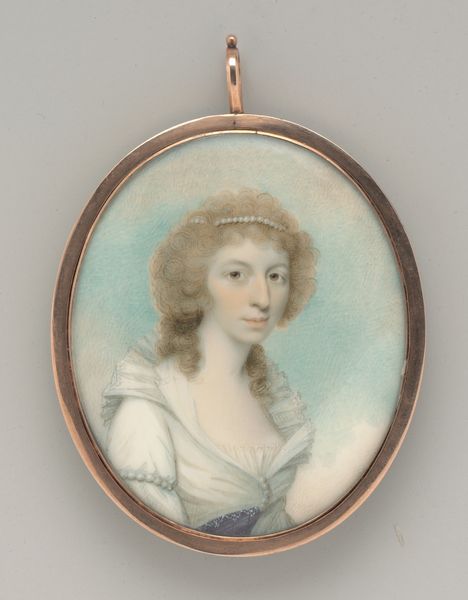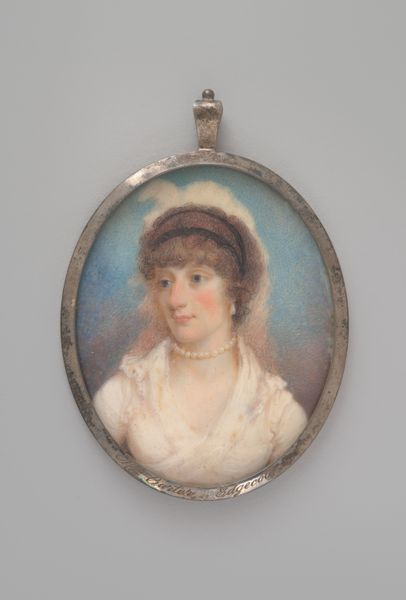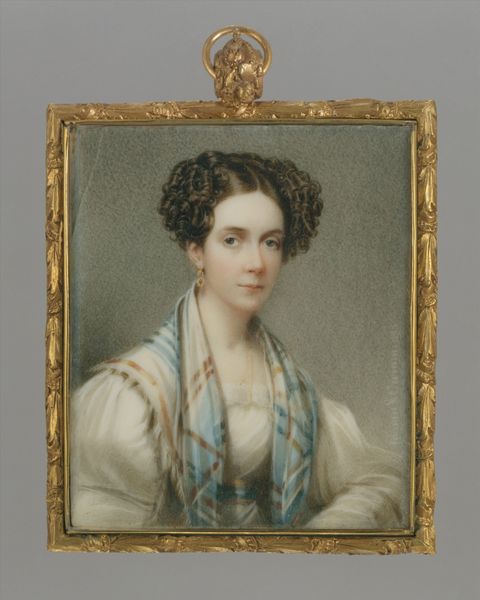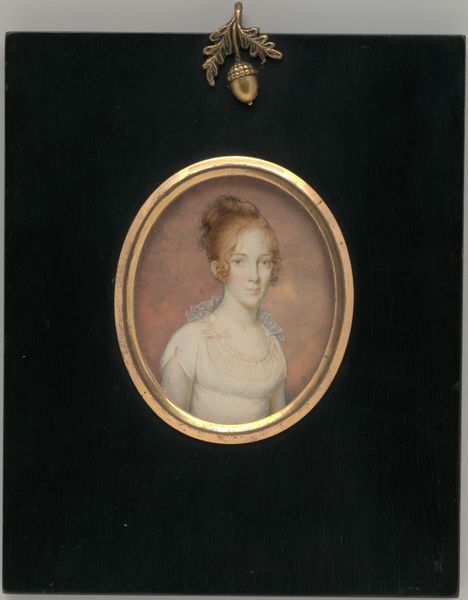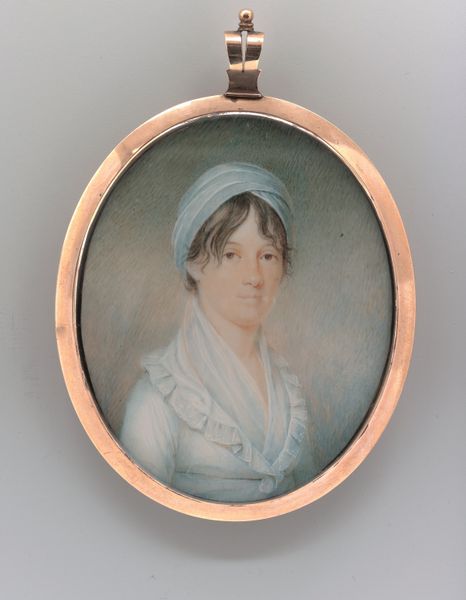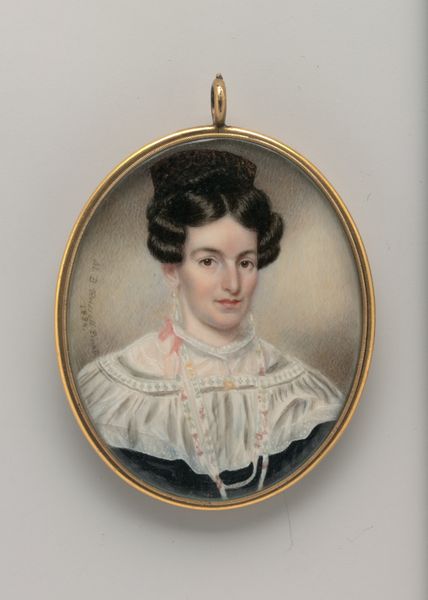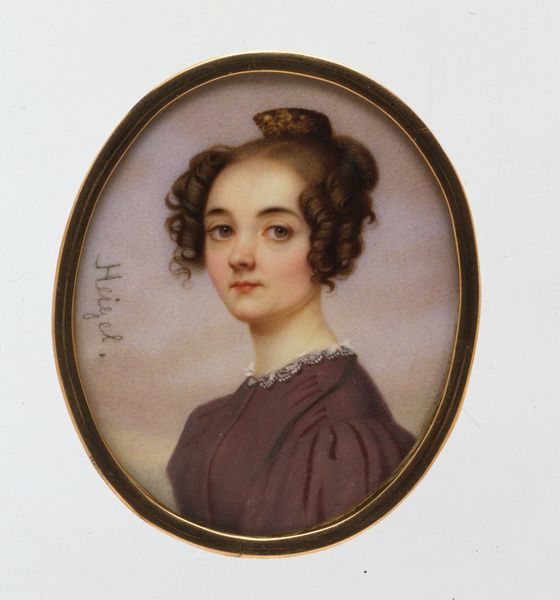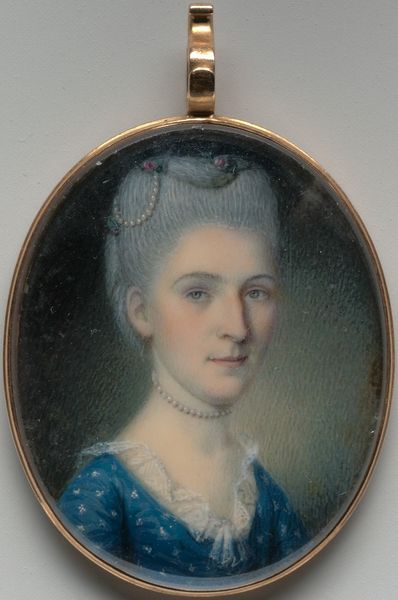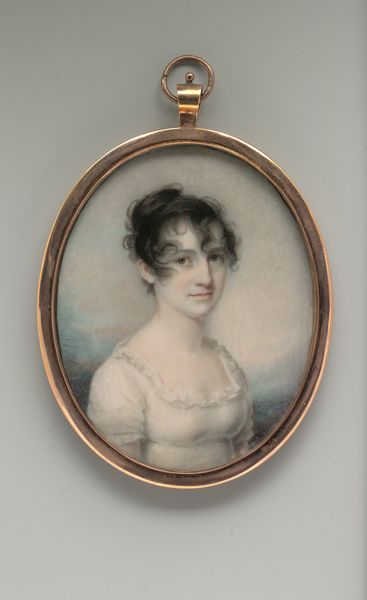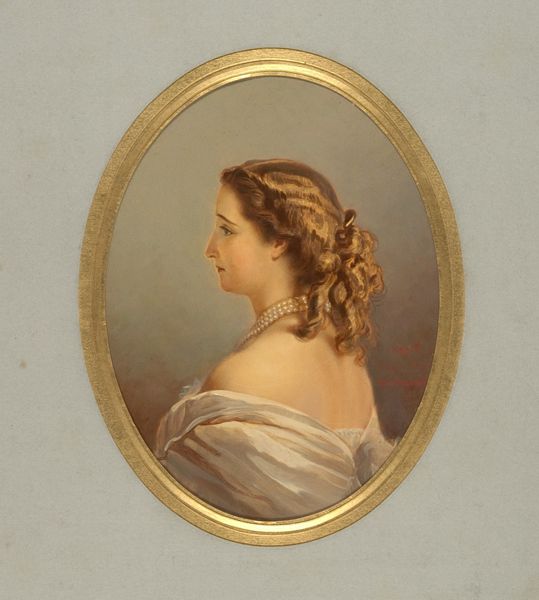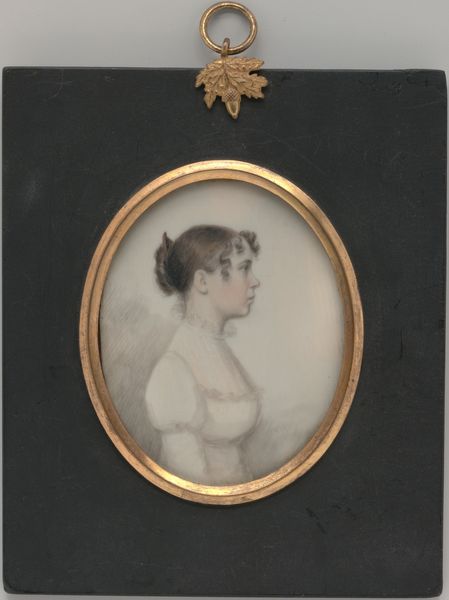
painting, watercolor
#
portrait
#
painting
#
watercolor
#
romanticism
Dimensions: 3 x 2 in. (7.6 x 5.1 cm)
Copyright: Public Domain
Curator: Before us is Henry Inman's "Portrait of a Lady," painted sometime between 1824 and 1830. This miniature watercolor on ivory resides at the Metropolitan Museum of Art. Editor: My first thought is delicate and refined. It’s a romantic gaze, rendered with painstaking attention to detail – especially that lace shawl. Curator: Indeed. Note the crisp lines and the interplay of light and shadow on the face, directing your sight, underscoring a composed exterior – the ideal romantic heroine, poised between longing and resignation. Editor: But let's consider that shawl for a moment. Lace making was extremely labor-intensive, wasn’t it? We're looking at hours upon hours of meticulous work. Someone spent all those days and weeks for one lady. This miniature is not just about beauty, but about the means and human effort to display that beauty, especially during an age where mechanization started, yet the value of hand work persisted. Curator: You raise a valid point. The lace undoubtedly speaks of wealth and status. But aesthetically, consider the delicate pattern. How it diffuses the light and complements the subject's fair complexion! Inman masterfully balances visual textures. Editor: Absolutely, the artistry is undeniable, yet inseparable from those hours dedicated for such display. This portrait then can function as a reflection of social values and status representation beyond Inman’s intention. What can it suggest about women's positionality within 19th-century? The choice of watercolor too suggests something, in such a diminutive scale. What level of training that can allow one to control the use of such unforgiving medium? Curator: It’s fascinating to see how your lens allows a deep dive into these minute decisions—how the medium enhances that quality of intimacy within the painting. Thank you for widening our understanding of these nuances. Editor: I hope our viewers see past surface aesthetics. Even the loveliest of portraits tells many tales—a weave of labor and cultural meanings rendered material, for anyone to appreciate.
Comments
No comments
Be the first to comment and join the conversation on the ultimate creative platform.
